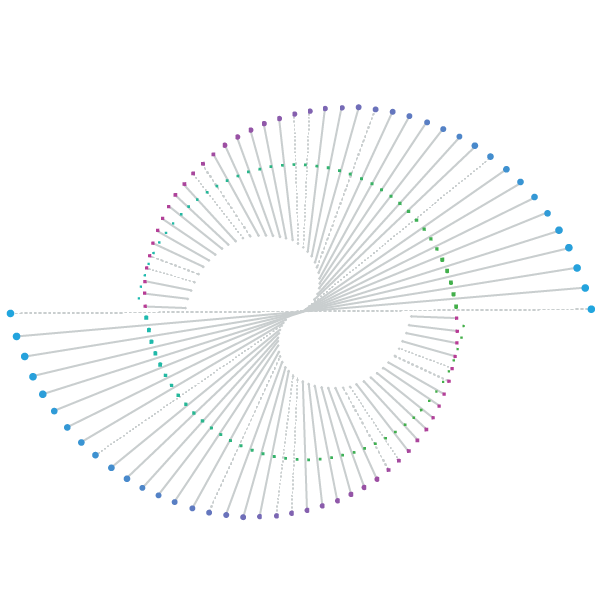Take advantage of the latest tools, techniques, and deep healthcare expertise to create scalable resources, precision insights, and actionable ideas.






















- Insights
- The IQVIA Institute
- Reports and Publications
- Reports
- Understanding the Use of Medicines in the U.S. 2025
Report Summary:
Areas of focus in this year’s report range from looking at how medicine usage patterns have shifted, to the impact of out-of-pocket costs and benefit designs on patients, to the complex nature of drug pricing. Dynamics that have become apparent during 2024 have driven significant revisions to the outlook, and in this report the drivers of change in medicine spending over the next five years are deconstructed to enable better understanding. This examination includes the impact of novel obesity and diabetes medicines which have been significant drivers of growth, and the uptake of other novel medicines expanding into new patient populations and becoming established as backbone therapies.
Key Findings:
- Medicine use has increased:
- Total prescription medicine use increased 1.7%, reaching 215 billion days of therapy in 2024
- Medicare beneficiary use of medicines at an all-time high
-
Some patients see out-of-pocket cost reductions:
- Fewer Medicare patients paid more than $3,500 in annual out-of-pocket costs as Medicare Part D redesign began Average insulin out-of-pocket costs have declined significantly due to $35 caps
-
Patients continue to see barriers to medicine access:
- Over half of new prescriptions for novel medicines go unfilled largely due to benefit design and high costs
- Spending on medicines has accelerated:
- The U.S. market at net prices grew 11.4% in 2024, up from 4.9% in 2023
- Greater use of medicines with significant clinical benefits is driving spending growth while net price growth is flat
Other Findings:
Prescription medicine days of therapy reached 215 billion in 2024, as growth has slowed in retail medicines

- The use of prescription medicines in the U.S. — based on defined daily doses — has grown 14% in the last five years to more than 215 billion days of therapy in both retail and non-retail settings, though growth slowed to 1.7% in 2024.
- Retail drugs currently represent 83% of medicine use in the U.S., with only 17% of use in non-retail settings, and non-retail growth surpassed retail growth in 2024.
- The use of prescription drugs dispensed from retail pharmacies has continued to grow at a rate of 3.0% annually, on average, over the last five years but growth slowed to 1.3% in 2024 bringing total market growth down.
Fewer Medicare patients paid >$3,500 for prescriptions in 2024 as patient cost sharing in the catastrophic phase was eliminated

- More Medicare patients have been facing costs above $2,000 per year over time as drug costs have risen and historic benefit design had costs mitigated but not capped in the catastrophic phase.
- In 2024, the implementation of Medicare Part D redesign from the Inflation Reduction Act (IRA) began to phase in, with the elimination of patient cost-sharing in the catastrophic phase, and more of these patients falling into total annual prescription out-of-pocket costs from $2,000 to $3,500.
- In aggregate, high-cost Medicare patients paid $6.5Bn in out-of-pocket costs in 2024, down from $7.0Bn in 2023, with most of the reduction in those patients above $3,500 annual spend.
Across all payers 27% of new prescriptions go unfilled but over one-third go unfilled in Medicaid primarily due to payer rejections

- Patients prescribed a new medicine by their healthcare provider may not fill those prescriptions, and while cost and patient behavior is often a factor, coverage rejections by payers are a larger driver of unfilled prescriptions.
- Overall, 27% of written prescriptions are not filled due to payer rejections and abandonment by patients. The unfilled rate includes 34% in Medicaid, 24% in Medicare, and 28% in commercial insurance.
- Payer rejections may be driven by formulary decisions, failure to satisfy prior authorization requirements, refilling too soon or exceeding volume limits, but nearly half of those rejections are overcome either by the patient switching to a secondary insurer, paying cash, or adding a coupon.
U.S. net sales growth in 2024 was driven by a subset of products

- Net medicine spending increased by $50Bn (11.4%) in aggregate from $437Bn in 2023 to $487Bn in 2024, with the majority of this growth driven by 31 products each with more than $500Mn in growth and which increased sales by $50Bn in aggregate.
- Other high growth products (n=39) and new brands contributed $14Bn and $7Bn in growth, respectively, and were offset by losses of exclusivity of $19Bn.
- Thousands of older and generic products had moderate to low growth from 2023 to 2024 and collectively declined $1Bn.
U.S. medicine spending is forecast to grow 3 to 6% through

- Total net spending on medicines in 2029 is expected to increase by $116Bn compared to 2024, as volume growth drivers and adoption of innovation will be partly offset by drivers of lower prices, including patent expiries and the effects of legislation.
- Over the next five years, medicine spending will grow between 5–8% on a list price basis and 3–6% after discounts and rebates.
- Growth will be driven by adoption of newly launched innovative products, with an average of 50–55 new medicines launching per year over the next five years, including those in oncology or with specialty or orphan status, as well as some more traditional therapies in diabetes, obesity, and neurology.
Related solutions
Drive better care and greater efficiency through deep, actionable insights.





